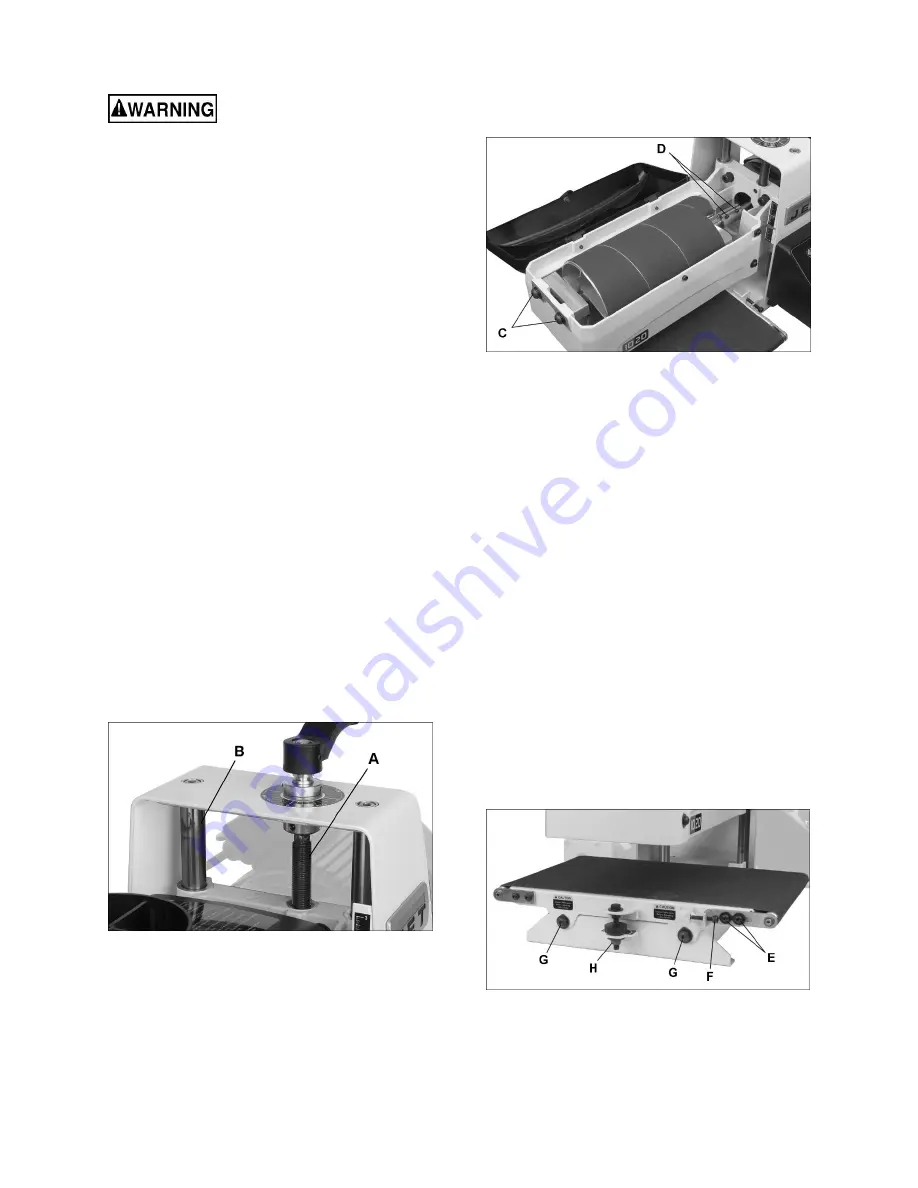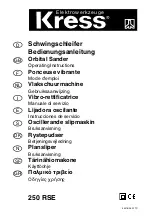
15
9.0
User-maintenance
Before doing maintenance on
the machine, disconnect it from the electrical
supply (pull out the plug), unless indicated
otherwise. Failure to comply may cause serious
injury.
9.1
Cleaning and lubrication
For best results, make cleaning the sander a regular
shop procedure. Allowing excess build-up of dust
and debris can adversely affect performance
through loading of the abrasives, slippage on the
conveyor table, and/or accumulation of material
inside the drums which can throw off the center of
balance.
Leave the dust collector on when cleaning dust from
the drums. Also brush the conveyor belt after
cleaning operations. If not cleaned, the conveyor
belt could allow stock to slip during sanding
operations.
NOTE: Bearings are pre-sealed and require no
lubrication.
Lubricate elevating leadscrew (A, Figure 9-1) as
needed.
Clean sawdust from abrasive strip and brush
dust from conveyor belt.
Keep guide bars clean (B, Figure 9-1).
Blow dust from motor vents and switch area.
Blow dust from inside of sanding drum, which
may cause vibration or offset the center of
balance.
Check all set screws for tightness on parts such
as bearings, conveyor table, and couplings.
Figure 9-1
9.2
Drum maintenance
The drum should not require removal from the
machine under normal circumstances. Should
maintenance ever become necessary, the drum has
been designed for easy removal and replacement.
1. Remove two socket head screws (C, Figure 9-
2) on the bearing block.
2. Loosen two screws on the coupling (D, Figure
9-2).
3. Carefully slide drum out of coupling and remove
from machine.
Figure 9-2: drum removal
9.3
Conveyor belt replacement
1. Disconnect sander from power.
2. Raise drum to highest position.
3. Loosen two screws (E, Figure 9-3) and turn
take-up screws (F, Figure 9-3) on both sides of
conveyor to relieve belt tension, and slide the
driven roller fully inward.
4. Loosen two table locking screws (G, Figure 9-
3).
5. Remove lock nut (G, Figure 9-3).
6. Remove two socket head screws that attach
conveyor table to base.
7. Lift up conveyor table and remove it from
machine. Avoid tearing the belt on any edges
underneath the conveyor table.
8. Set conveyor on motor side and slide conveyor
belt off end of conveyor table.
9. Install new belt and re-install conveyor table.
Check alignments, and tension and track the
new belt.
Figure 9-3














































